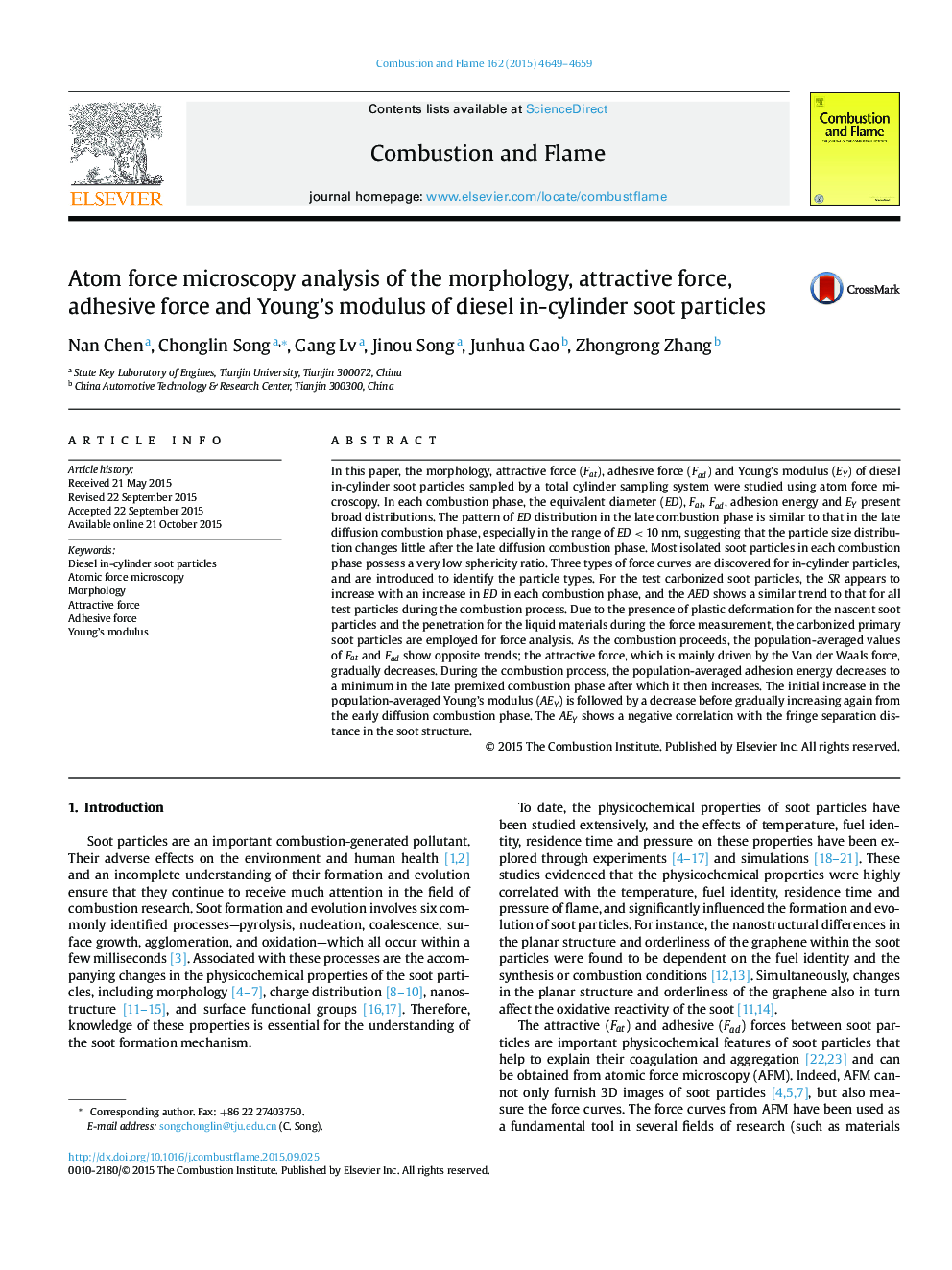| کد مقاله | کد نشریه | سال انتشار | مقاله انگلیسی | نسخه تمام متن |
|---|---|---|---|---|
| 168618 | 457943 | 2015 | 11 صفحه PDF | دانلود رایگان |
In this paper, the morphology, attractive force (Fat), adhesive force (Fad) and Young's modulus (EY) of diesel in-cylinder soot particles sampled by a total cylinder sampling system were studied using atom force microscopy. In each combustion phase, the equivalent diameter (ED), Fat, Fad, adhesion energy and EY present broad distributions. The pattern of ED distribution in the late combustion phase is similar to that in the late diffusion combustion phase, especially in the range of ED < 10 nm, suggesting that the particle size distribution changes little after the late diffusion combustion phase. Most isolated soot particles in each combustion phase possess a very low sphericity ratio. Three types of force curves are discovered for in-cylinder particles, and are introduced to identify the particle types. For the test carbonized soot particles, the SR appears to increase with an increase in ED in each combustion phase, and the AED shows a similar trend to that for all test particles during the combustion process. Due to the presence of plastic deformation for the nascent soot particles and the penetration for the liquid materials during the force measurement, the carbonized primary soot particles are employed for force analysis. As the combustion proceeds, the population-averaged values of Fat and Fad show opposite trends; the attractive force, which is mainly driven by the Van der Waals force, gradually decreases. During the combustion process, the population-averaged adhesion energy decreases to a minimum in the late premixed combustion phase after which it then increases. The initial increase in the population-averaged Young's modulus (AEY) is followed by a decrease before gradually increasing again from the early diffusion combustion phase. The AEY shows a negative correlation with the fringe separation distance in the soot structure.
Journal: Combustion and Flame - Volume 162, Issue 12, December 2015, Pages 4649–4659
